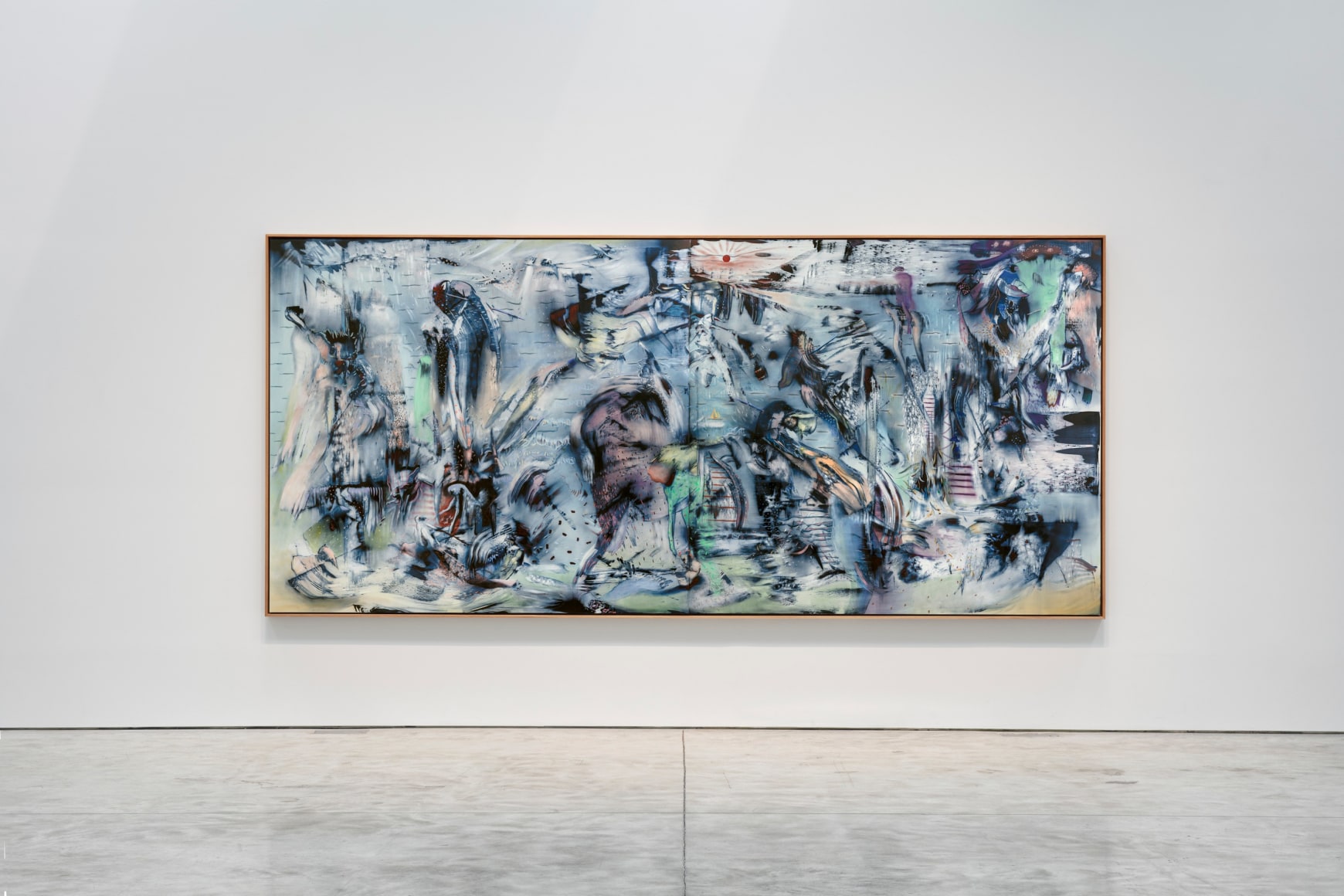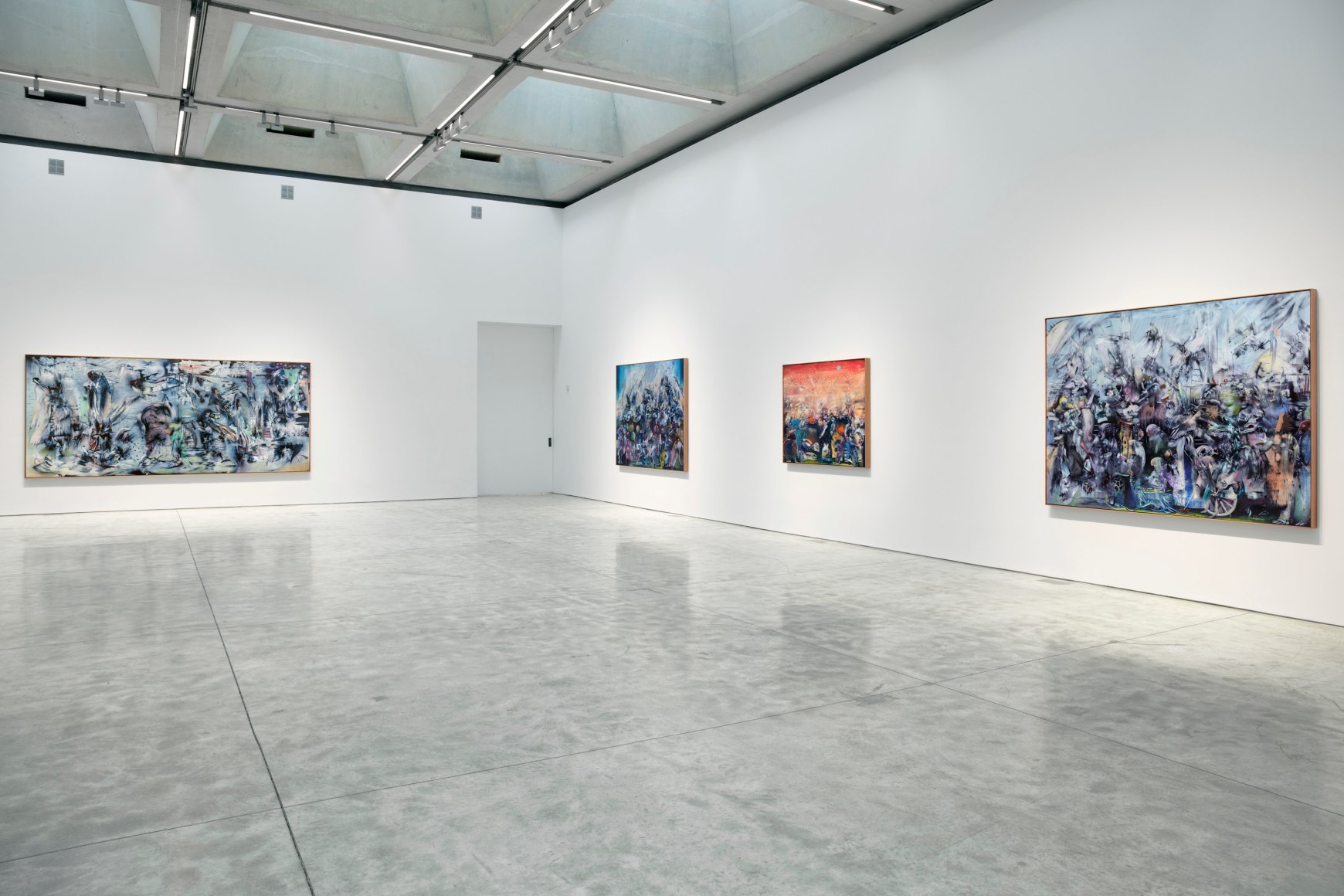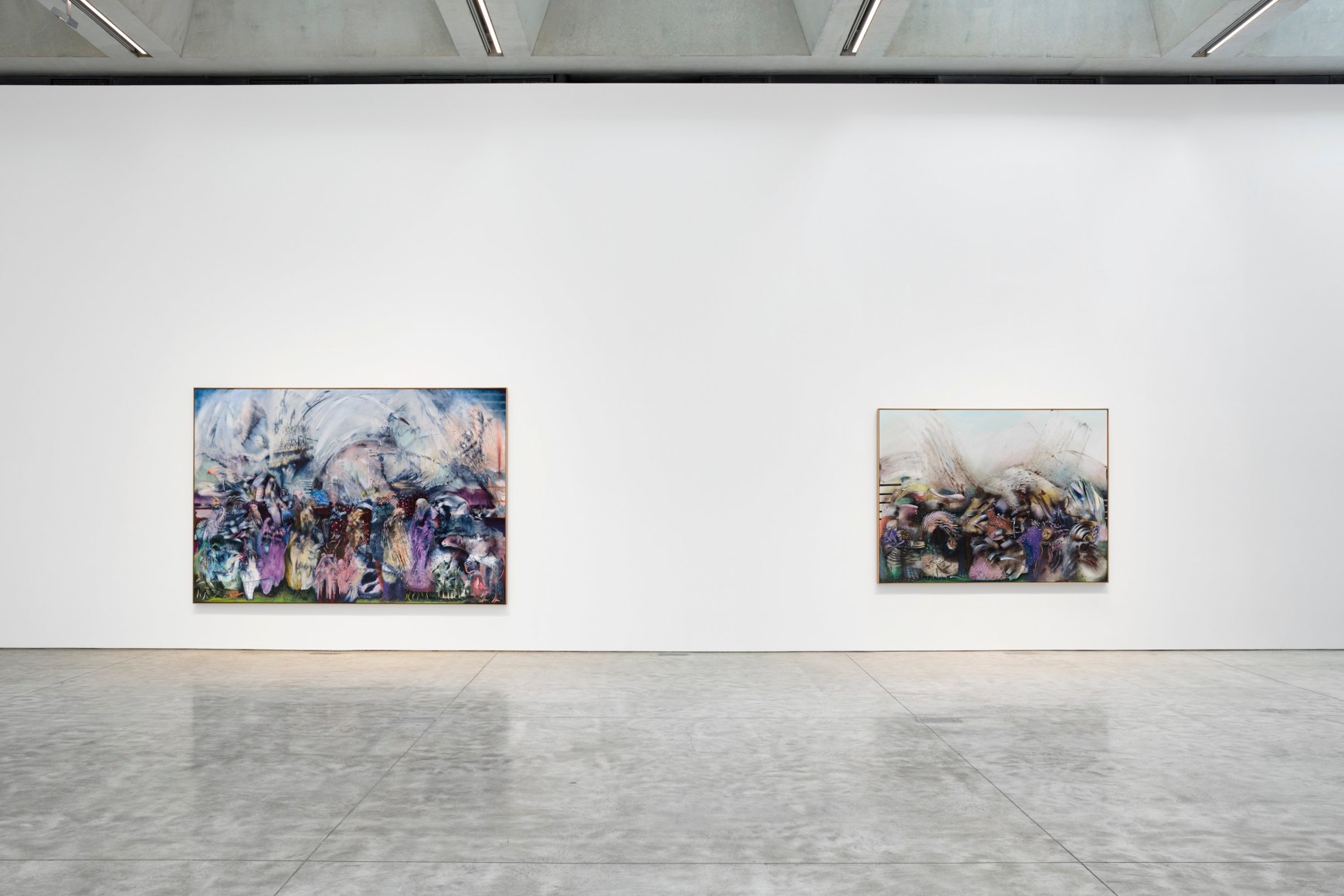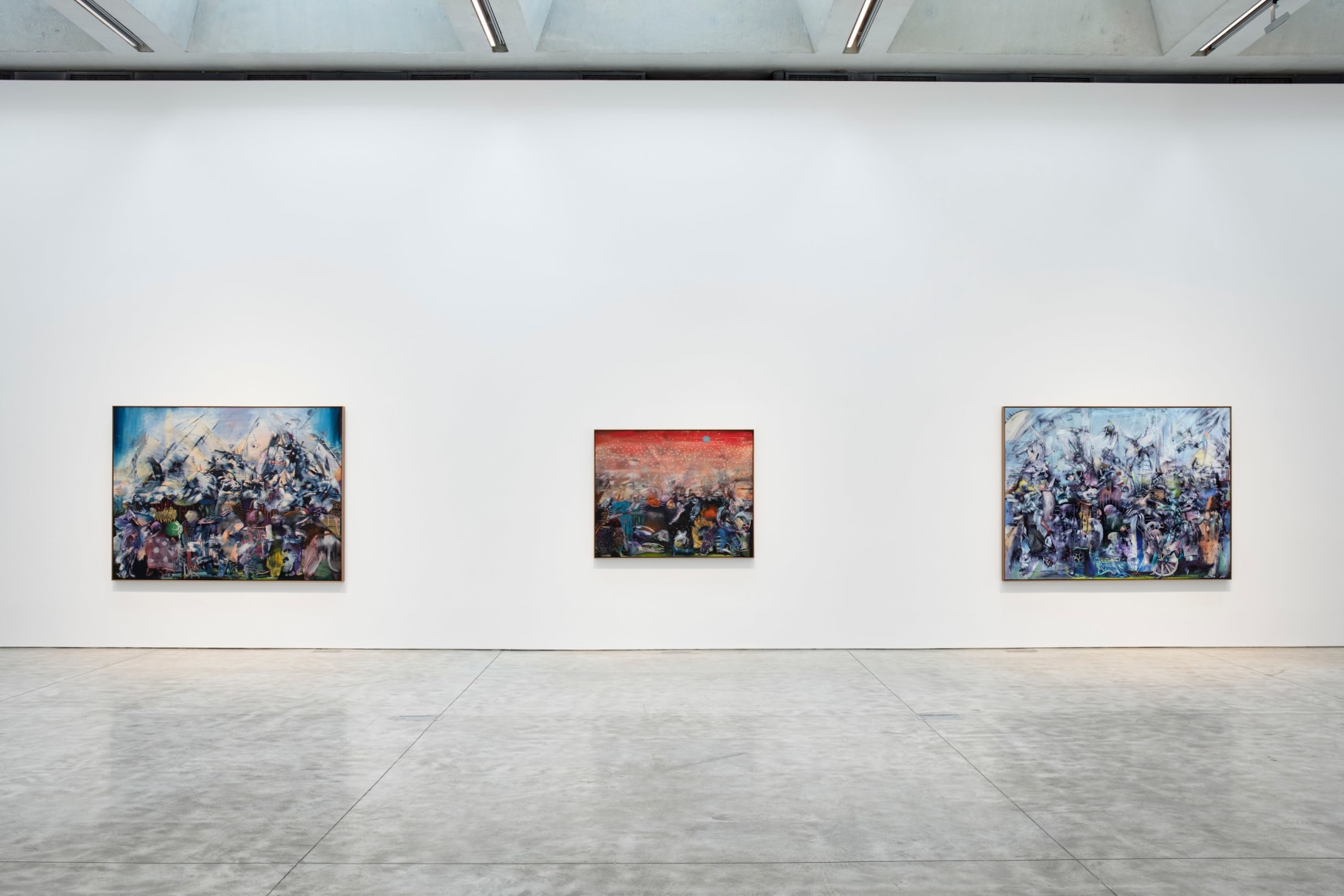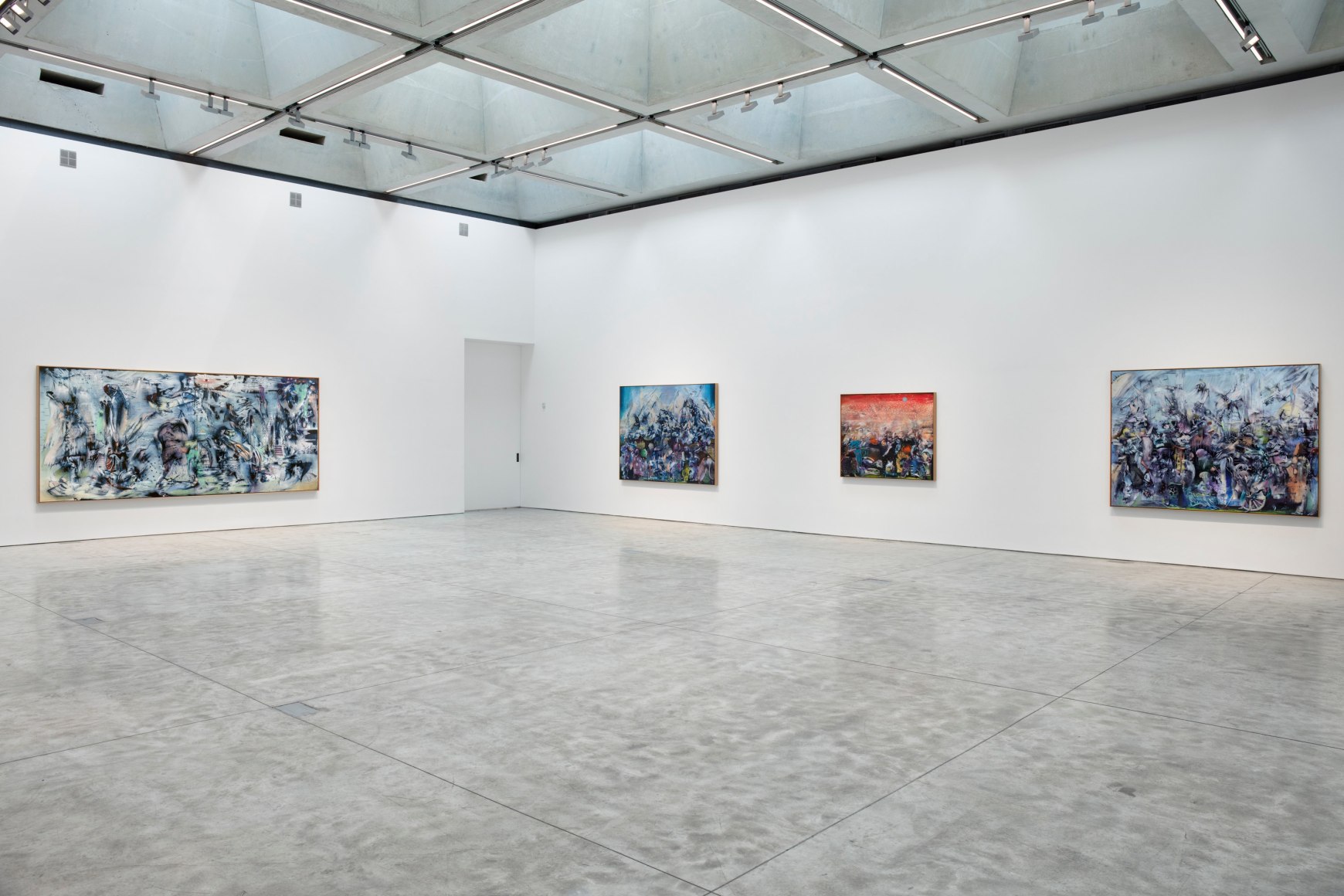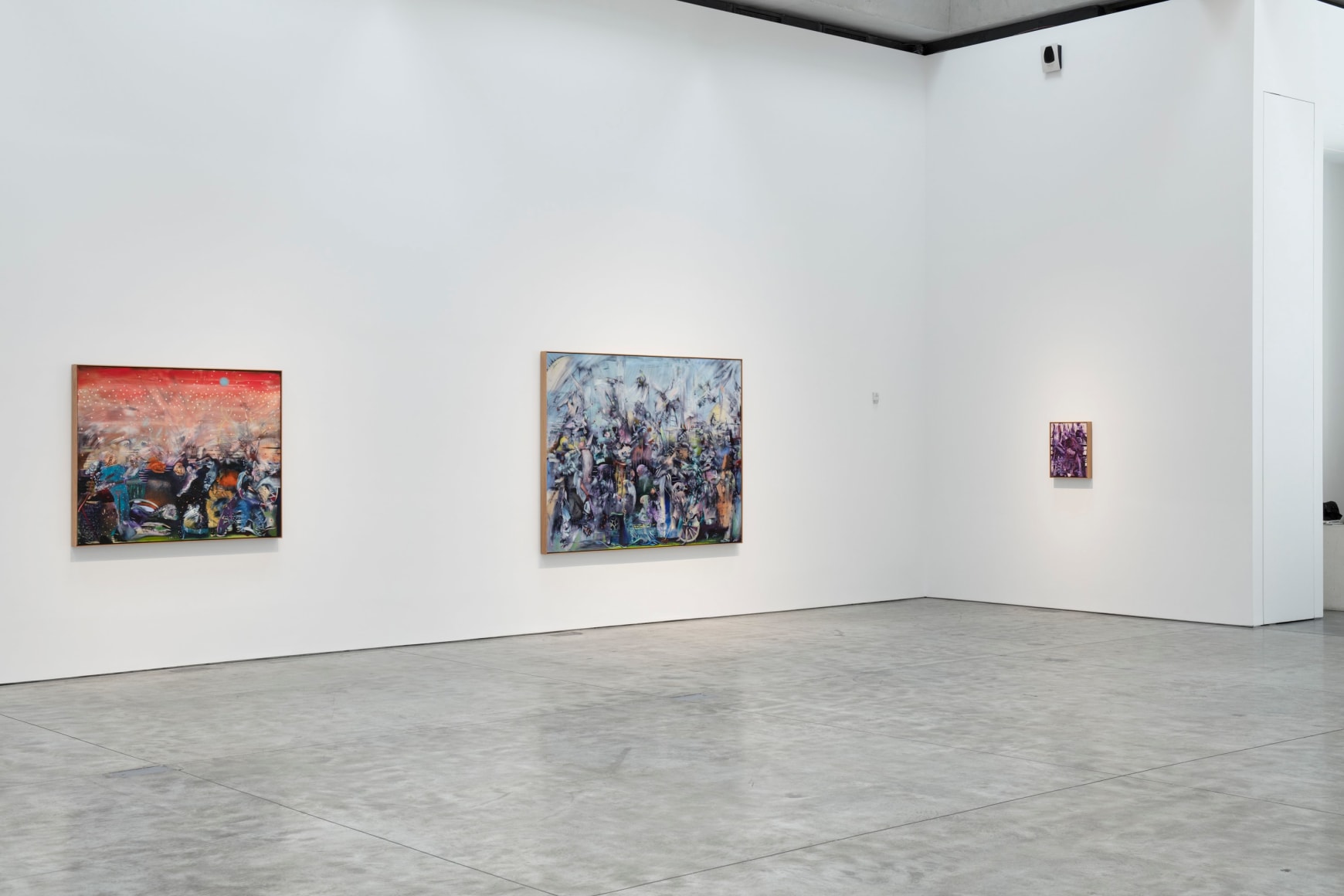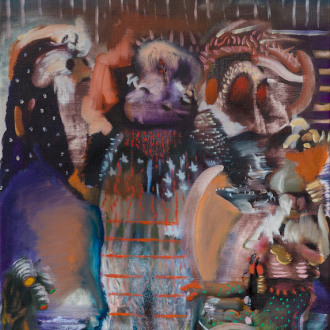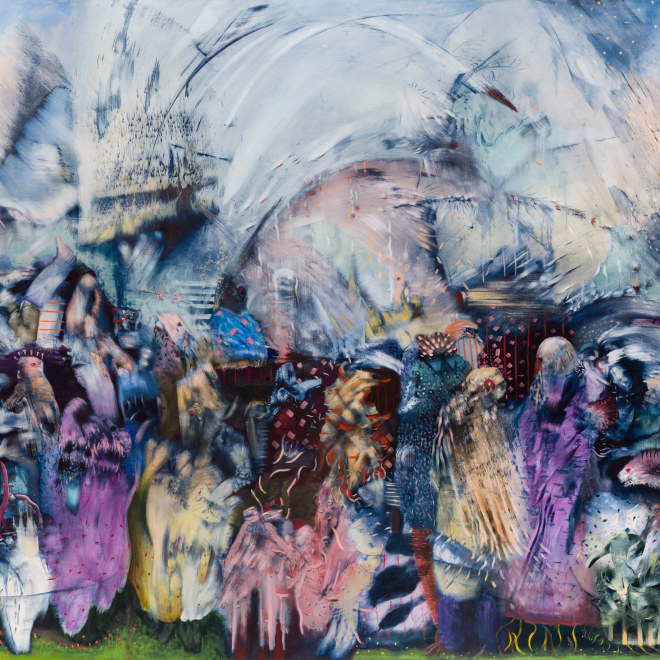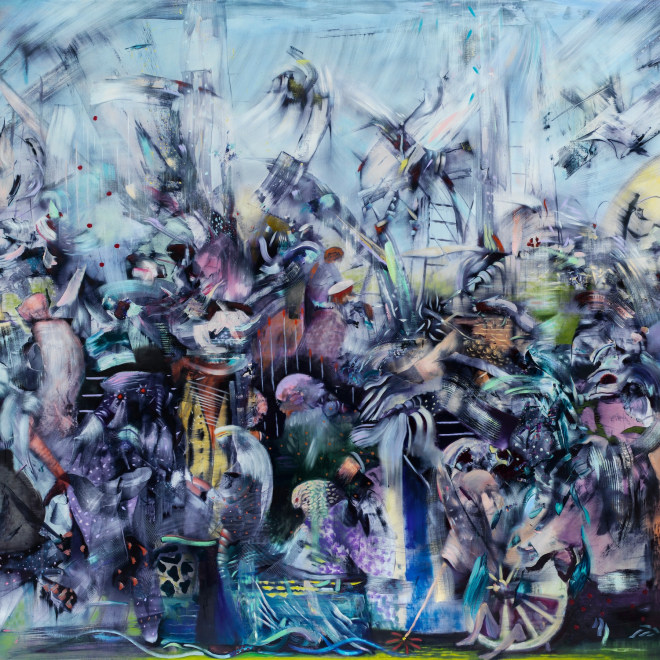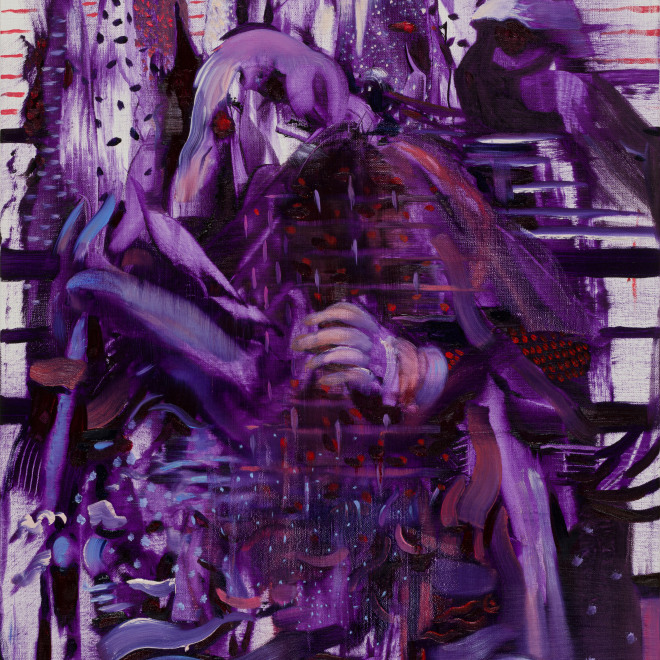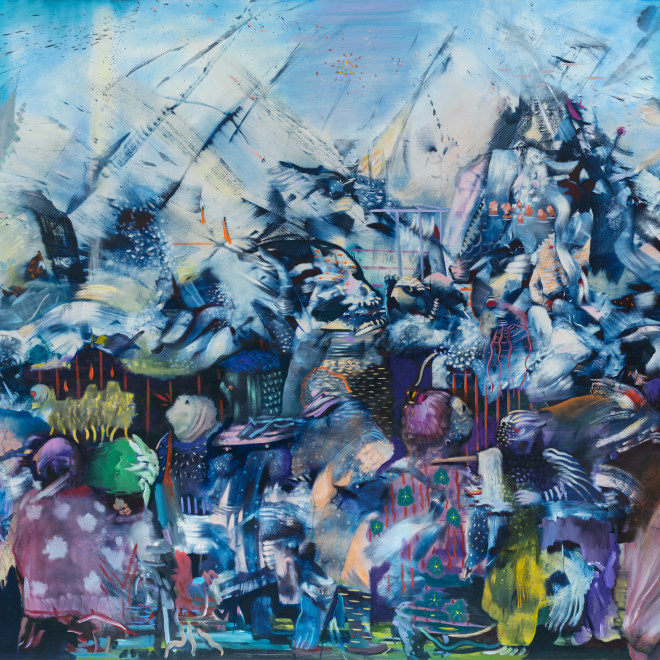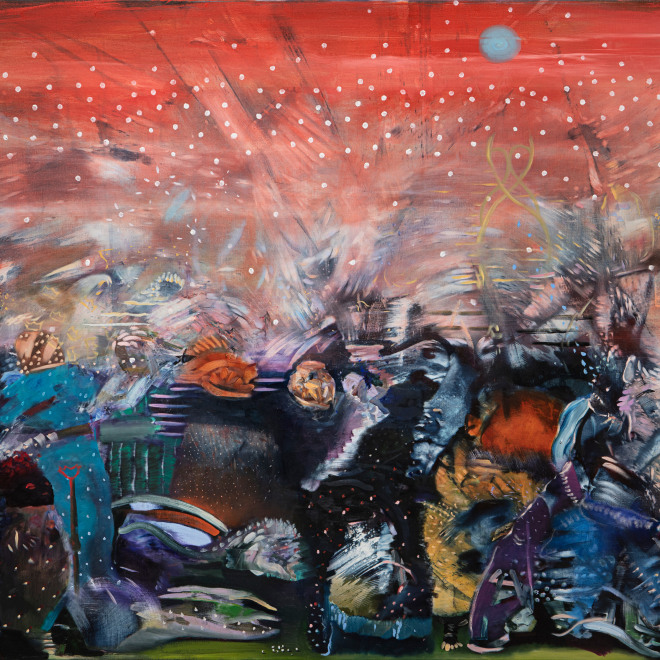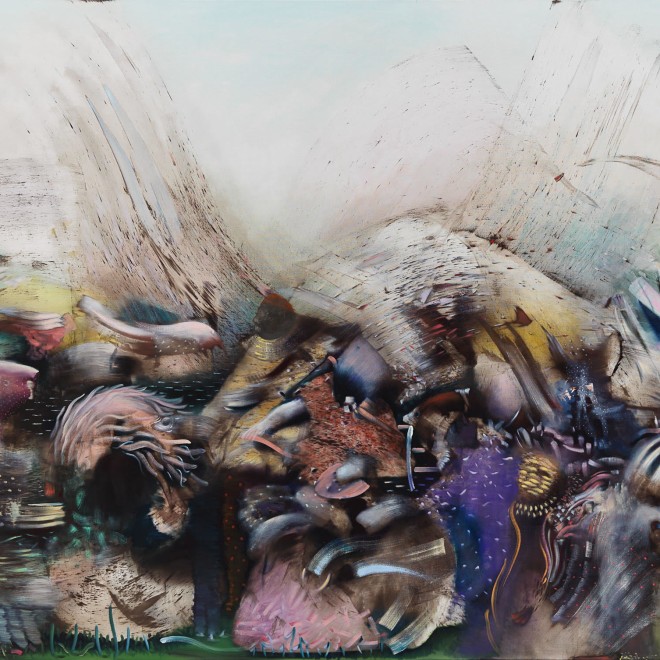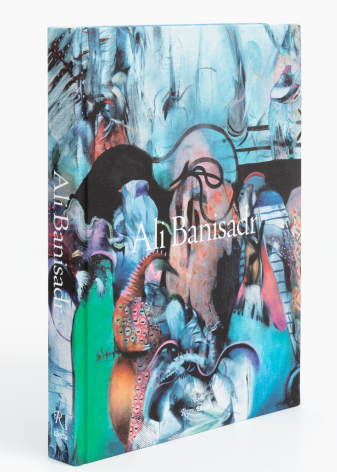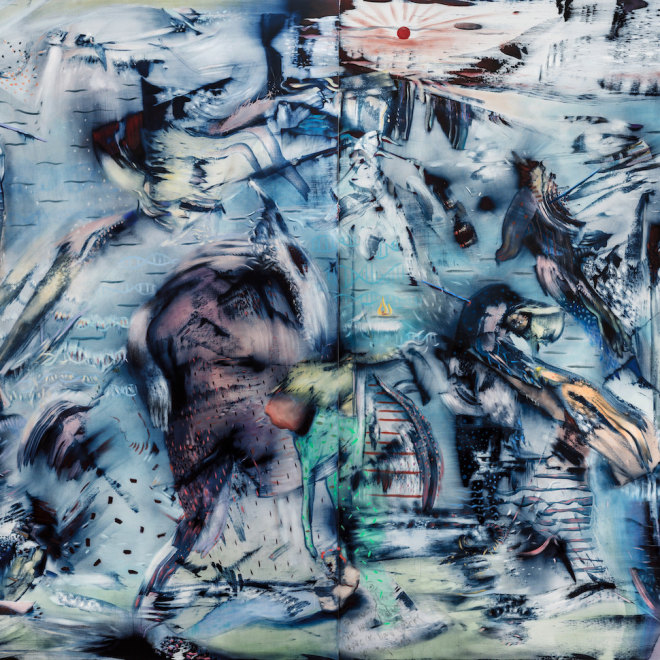
Kasmin is pleased to present the gallery’s first solo exhibition of work by artist Ali Banisadr (b.1976, Tehran). Comprising nine recent paintings, several of which were included in Banisadr’s critically-acclaimed museum show at the Wadsworth Atheneum Museum of Art, Hartford, CT, in 2020-21, the exhibition will also include a new large-scale diptych, the first multi-panel work by the artist in six years. These Specks of Dust coincides with the publication of a major monograph by Rizzoli Electa featuring contributions from Negar Azimi, Robert Hobbs, Joe Lin-Hill, and John Yau.
Banisadr’s vivid and turbulent paintings conjure an energetic sense of the world by depicting the quintessentially cyclical nature of our collective history. Titled in homage to Francisco Goya’s 1799 etching from the Los Caprichos series, “Those Specks of Dust,” the exhibition assembles varied art historical references with deeply personal symbolism to depict the artist’s inner visions. Its title encompasses all the senses in which the micro and macro inform one another, from the elemental minerals of pigment that constitute Banisadr’s painterly materials to the imperceptible cells of virus that defined the year in which the works were realized.
The significance of memory, both personal and collective, emerges prominently in the works. Banisadr’s adoption of mythological time, or a history that expands to encompass fantasy, myths, and ideologies, acts to question modernism’s notions of progress and highlight our systems of time as a cultural construct. Drawing from ancient epic poems such as Gilgamesh, The Odyssey, and Dante’s Inferno, Banisadr is a collector of stories and their archetypes.
Far from languishing in historical record, the essence of these narratives endures in both contemporary life and our imaginings of the future. The artist has said, "I am fascinated by this encyclopedic gathering of fragments of knowledge and weaving them together to create a visionary world." As plague and carnival circle one another in perpetuity, Banisadr observes as an all-seeing-eye, rendering the essences of humanity on the canvas.
Banisadr’s work also intersects with our increasingly technological futures. Occupying a space between the logic of analogue and digital, the paintings glitch as if in information overload. Writer Negar Azimi has likened them to “the contemporary experience of negotiating the digital detritus of the internet; one image or idea leads to another—an exquisite corpse—a million tabs open; rabbit holes everywhere.”As warps, folds, and layers are presented in simultaneity, subject gives way to landscape of frenzy.
The exhibition abounds in symbolism spanning ancient and contemporary cultures. Red, a painting completed in March 2020, features an ominous blue moon adorning a blood red sky—a premonition of the unrest to come. Banisadr recalls the sense of urgency he experienced when working on the canvas, a feeling that ultimately gave way to a lack of mobility and mounting pressure that emerges prominently in The Caravan, in which a wheel, caught in stasis, takes the central point of the canvas.
The Healers looks to the future, depicting semi-abstracted figures with limb-like tentacles grouped together communally in efforts to restore equilibrium to a disrupted society, reminding us of the possibility of the sublime.
Only Breath captures an abiding atmosphere of anxiety that defined the pandemic, recalling the sirens and fireworks that overtook New York City, where the artist is based. These aural disturbances were evocative for Banisadr’s of his experiences growing up in Tehran during the Iran-Iraq war, where air raids, bombings and explosions were common. Banisadr credits this with the development of his synesthesia, a condition that presents him with orchestrally-complex soundscapes as he works intuitively on vital and complex compositions.
A large-scale diptych, which parallels the aspect ratio from both Picasso’s Guernica (1937) which also informed Lee Krasner’s Combat (1965), forms a centerpiece of the exhibition. Banisadr’s absorption of cubist and abstract expressionist explorations has been noted by poet and critic John Yau, who described this element of the artist’s charged, dynamic work as giving rise to a “metaphorical wind moving through his paintings.” Yau goes on to say, “There are artists and writers who are able to create alternative worlds governed by their own ineluctable laws. This is the tradition that Banisadr has elected to become part of.”
ABOUT ALI BANISADR
Ali Banisadr lives and works in New York City. The artist is currently the subject of a solo exhibition at the Museo Stefano Bardini & Palazzo Vecchio, Florence. He was recently the subject of solo museum exhibitions at the Wadsworth Atheneum Museum, Hartford, CT; the Benaki Museum, Athens; Gemäldegalerie, Academy of Fine Arts, Vienna, and Het Noordbrabants Museum, Den Bosch, Netherlands. In 2013, his work was included in "Love Me/Love Me Not, Contemporary Art from Azerbaijan and its Neighbors," The 55th International Art Exhibition, Venice Biennale, and “Expanded Painting," Prague Biennale 6.
Banisadr’s work is included in significant public collections worldwide, including the Albright-Knox Art Gallery, Buffalo, NY; the British Museum, London; Centre Pompidou, Paris; Het Noordbrabants Museum, Den Bosch, Netherlands; Hirshhorn Museum and Sculpture Garden, Washington, D.C.; Los Angeles County Museum of Art; the Metropolitan Museum of Art, New York; Museum of Contemporary Art, Los Angeles; Museum der Moderne, Salzburg; the Philadelphia Museum of Art, and the Wadsworth Atheneum Museum of Art, Hartford, CT.
CLICK ON LINKS BELOW:


